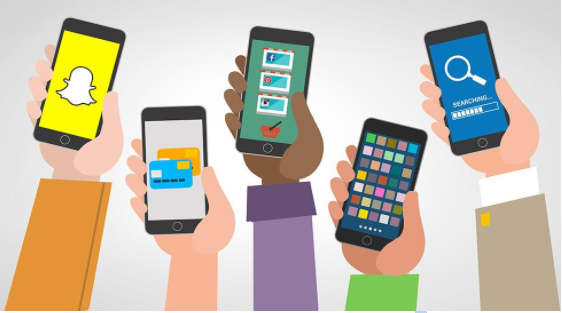The era of the smartphone is now, and it certainly won’t be dying down any time soon, in fact – recent statistics indicate that 71% of UK adults have used mobiles or smartphones to access the internet this year so far; whereas a mere 40% of adults are using desktop computers.
This ever-growing popularity increase in mobile usage means the requirement for marketers to optimise their mobile user experience (UX) has never been more essential.
It is a common misconception that mobile phones reduce the necessity for phone calls when actually 70% of mobile searchers have called a business directly from search results; meaning making a call needs to be a quick and straightforward action in order to comply with the on-the-go aspect of a mobile.
Here are some ways you can drive calls from mobile marketing.
Implement click-to-call through PPC
Pay-per-click advertising (PPC) is a fantastic solution for putting your products or services in front of people at the top of the results pages, but it still means users need to visit your website to find a contact number which can become tedious and a hassle – especially if they require quick access.
Adding click-to-call to your PPC campaigns allows a user to click on a number or phone icon and dial your number immediately from your ad making accessibility through mobile web browsing considerably easier.
>See also: Are businesses neglecting the humble SMS for mobile marketing?
These ads can be shared within a specific ad group or throughout an entire campaign and can be counted as conversions.
For example, you run a plumbing business in Guildford and have added click-to-call to promote your service, if someone who requires a plumber urgently in the area searches ’Guildford plumbers’ on their mobile and one of your ads appear, the potential customer can click onto your call icon to immediately contact your business.
Easy to call on organic search results
Even without PPC advertising, it is still possible to include your telephone number in a potential customer’s organic mobile searches.
All you need to do is add your main contact number in your page’s description so mobile users can still contact your site without needing to load it; this will also prevent your bounce rate from being negatively affected.
Although this is considered difficult to track, assigning a static call tracking number as opposed to a dynamic number will track the conversion success of this tactic.
Remember – the ideal length for a page description is between 155-160 characters, anything longer is likely to be shortened by the search engine.
To ensure your phone number is visible include it within the first 130 characters to prevent it from being hidden on mobile screens.
Call-Only ad campaigns
Despite looking similar to PPC, call-only campaign ads predominantly showcase a phone number, business description and call button, instead of directing searches to a destination URL or a landing page.
Although it is already possible to set up a regular search campaign with a call extension through click-to-call, the call extension will only be visible for the top ranking ads: ads in lower spots might not show, resulting in clicks to your mobile site instead.
>See also: How technology will drive marketing in the next few years – Gartner
Additionally, you can bid for phone call clicks instead of website clicks. Enable call-only ads within Google AdWords by selecting ’Call-Only’ from the Search Network ad settings page.
Use Micro-Moments
The main advantage of smartphones is that they allow us to act on impulse – users will take immediate action when wanting to find, learn or buy something urgently; these are known as micro-moments.
Unfortunately for marketers, users have high expectations and little patience, so the need for high quality, relevance and usefulness have never been more important, in fact 82% of smartphone users will turn to their phone to influence a purchase decision while in a store.
By determining your exact engagement path with customers, you can begin to formulate messages that will appeal to them during these micro-moments.
You can also use micro-moments to refine strategies to increase your exposure, conversions and the quality of your customer engagement.
For example, with 63% of web searches happening on mobiles during big games, Nike decided to utilise their data to understand the surge in searches after major moments in sporting events.
Nike identified from their data that fans were using their mobiles to easily monitor the statistics for live games; this inspired the creation of their 3-D phenomenal shot campaign which showcased the world’s greatest players in their most triumphant and admirable sporting moments.
Introducing this campaign meant Nike had fully utilised mobiles to ensure that its brand is widely accessible to consumers.
Track where mobile enquiries are coming from
When investing in the performance of mobile ads, knowing the full journey of a customer is vital for maximising your ROI.
Call tracking, provided by companies such as Mediahawk, provides reports on telephone calls to identify which leads originated from which piece of marketing, including whether it was a mobile search.
Mobile website visits and ad clicks/views that provided the best conversions can then be used to optimise campaigns to increase revenue – the best practice is to optimise your ads and website around calls which convert most efficiently to reallocate your marketing budget.
Furthermore, call tracking integrates with Google Analytics and AdWords meaning each phone call generated from a tracked number – whether through calls extensions, click-to-call ads or click-to-call landing pages will be mapped back to the ad group, keyword and campaigns that generated the call.
This information allows you to view your calls in Analytics as events and in AdWords as conversions enabling you to optimise your ads around those which are performing best – budget is finite after all.
Sourced by Natalia Selby, marketing co-ordinator at Mediahawk










